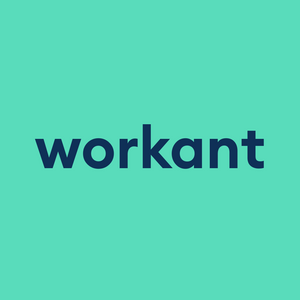Within the realm of HR, there’s lots of industry-specific jargon. Words and phrases are used in ways that can be easily misinterpreted.
Check out this list of some frequently used HR terms, and ensure that your understanding of these concepts is spot-on.
Applicant Tracking System
A software module assisting with the hiring process. It efficiently streamlines and automates the tracking of candidates through the management of administrative activities related to scheduling, sourcing/recruitment, and other processes related to finding and evaluating potential new employees.
Artificial Intelligence
Can refer to the field/industry, or a characteristic/ability. AI is characterized as machine intelligence, or the simulation of human thinking. It is represented by processes and behaviors that mimic those of the human brain, such as learning and knowledge-acquisition, logical reasoning, complex task-completion, informed decision-making, perception, and a range of other cognitive activities.
The term “artificial intelligence” is hard to understand, and most of us don’t comprehend the full scale of its elements, but for the average HR professional a basic awareness of its context is enough.
Attrition
Is used in a variety of ways, but primarily means the intentional reduction of a workforce through gradual, natural processes (i.e., voluntary resignations and retirements) rather than as a result of layoffs/firing practices. Can signify a single event― an employee leaving voluntarily and (as per organizational design) not being replaced―or the overall long-term process utilized by HR teams to downsize. It can also be referred to as a formula: (# of employees that left a workforce in a given period)/(average # of employees during that period), or in relation to customers instead of employees, called customer attrition.
Benchmarking
A useful HR technique. The process of comparing the KPIs, metrics, performance, output, success of initiatives, etc. of one organization, employee, or department with those of others/competitors (or industry averages). It uses data to internally or externally compare and contrast processes, identify best practices in relation to business outcomes, and determine which strategies are overarchingly fruitful.
Change Management
The structured, systematic, and overarching approach or process of implementing change within an organization.
The Cloud
The virtual (existing on the internet) nexus of resources, software systems, data, apps, and more, which is accessed not through a network of remote servers. Cloud-based HR software refers to systems or programs hosted through the internet rather than locally (on a computer or device).
Corporate Social Responsibility
This can refer to the concept of an organization’s accountability and influence regarding positive ethical, environmental, communal, and societal impacts, or the approach/practice of organizational self-regulation (or implementation of and adherence to self-imposed standards) companies as pertains to social good.
Corporate Social Responsibility not only improves our society, the earth, and the overarching culture of global business, but can also increase profits in the long run, attract & retain passionate employees, and help your business stand out.
Data Visualization
The visual or graphic representation of information and data. It is useful for HR professionals, as it can highlight previously unnoticed trends or patterns, provide a perspective allowing for deeper general understanding, or present more simplified views that can be easily understood by those less familiar with data analysis.
Diversity, Equity, & Inclusion
(DEI) A discipline or policy that promotes or requires the inclusion, representation, hiring, and promotion of a more diverse range of types of employees. It also indicates the practices associated with ensuring equal access to opportunities in the workplace. This field or aspect of HR focuses on creating workforces comprised of a range of perspectives, backgrounds, demographics, etc. in order to cultivate a fair and equitable culture, as well as produce the most extensive range of ideas and approaches possible to improve a business’ performance.
Employee Development
The process of developing employee skills, capacities, and competencies in order to prepare them for future roles and their entire career (not just a single job). Is initiated, provided, or promoted by an organization and fixates on the long-term readiness and overall capacity for future success of a workforce.
Employee Engagement
A concept describing the degree to which employees are invested, dedicated, and emotionally committed to an organization’s success.
Employee Value Proposition
Indicates the value an employer, organization, or business promises or offers to its employees in exchange for their abilities, time, and commitment to a role and/or company. It includes both monetary and non-monetary rewards and benefits unique to a company/role, specific attributes of working within a specific team or organization, and everything else an organization offers employees in order to differentiate itself from competitors and attract & retain good people.
The Future of Work
A term or concept dealing with how work will be done in the future, or the results of the specific ways the nexus of enterprise will shift and evolve. It pertains to the projected or predicted characteristics, defining practices, trends, and future standards that will result from the ways business, the marketplace, and the workforce will change as we move forwards through time.
It’s impossible to accurately predict the nature of the future of work, but nonetheless greatly advantageous to monitor trends in approaches, the evolution of employee expectations, and ongoing developments that will impact how leaders and HR teams operate.
Gamification
The strategic approach or practice of applying game design, game techniques, and game-style elements, processes, and/or methodologies outside of the realm of gaming. In regard to HR, it’s used to augment employee engagement, development, wellbeing, performance, and more in order to eventually improve business outcomes.
The Great Resignation
The ongoing phenomenon, economic trend, or long-term event that began as a result of the COVID-19 pandemic, of a much higher rate of voluntary resignation across the entire workforce. This describes the significantly elevated rate of employees across most industries leaving their jobs of their own accord.
HR Analytics
The analysis, interpretation, and subsequent leveraging of HR data to improve upon business outcomes by developing deep insights that can be used to enhance decision-making abilities and reach higher levels of organizational success.
HR Metrics
Values, measurements, and numbers that can be utilized to monitor a workforce’s success, determine the effectiveness of HR programs/initiatives, and gauge the efficacy of employee-focused projects.
HRMS, HRIS, and HCM systems
Human Resource Management Systems, Human Resource Information Systems, and Human Capital Management Systems. Internally used, overarching, and centralizing software frameworks that include a variety of functions, modules, or applications pertaining to HR data/metrics/analytics.
KPIs
Key Performance Indicators. A type of performance-measuring metric determining, measuring, and evaluating success in relation to a certain objective. They are used to track the progress of activities aimed at achieving critical (key) goals.
While KPIs and HR metrics are oftentimes referred to interchangeably, they’re not the same. Like the relationship between squares and rectangles, all KPIs are metrics, but not all metrics are KPIs. KPIs are distinguished by focusing specifically on business goals.
Skills Gap
The mismatch, disparity, or difference between the skills employees have and the skills required for a specific job. It is expanding within the current context of global business and is projected to continue doing so.
Soft Skills
In contrast with hard skills, these are not directly tied to an objective capacity for completing a specific technical task or performing a single role. They are qualitatively measured abilities relating to one’s ability to succeed in a range of positions, such as communication, problem-solving, leadership, empathy, creative thinking, and more. These are harder to define, measure, and teach than hard skills, and also increasingly important within the modern-day nexus of enterprise.
Strategic Planning
The process of a company, business, or organization pinpointing a vision for the future, strategically determining its long-term and short-term priorities and goals, deciding where to utilize its resources in order to reach those goals, and creating a “road map” or vision/plan for attaining desired achievements.
Upskilling (or reskilling)
The trend, procedure, or process of helping workers acquire new skills or expand /improve upon their existing ones.

